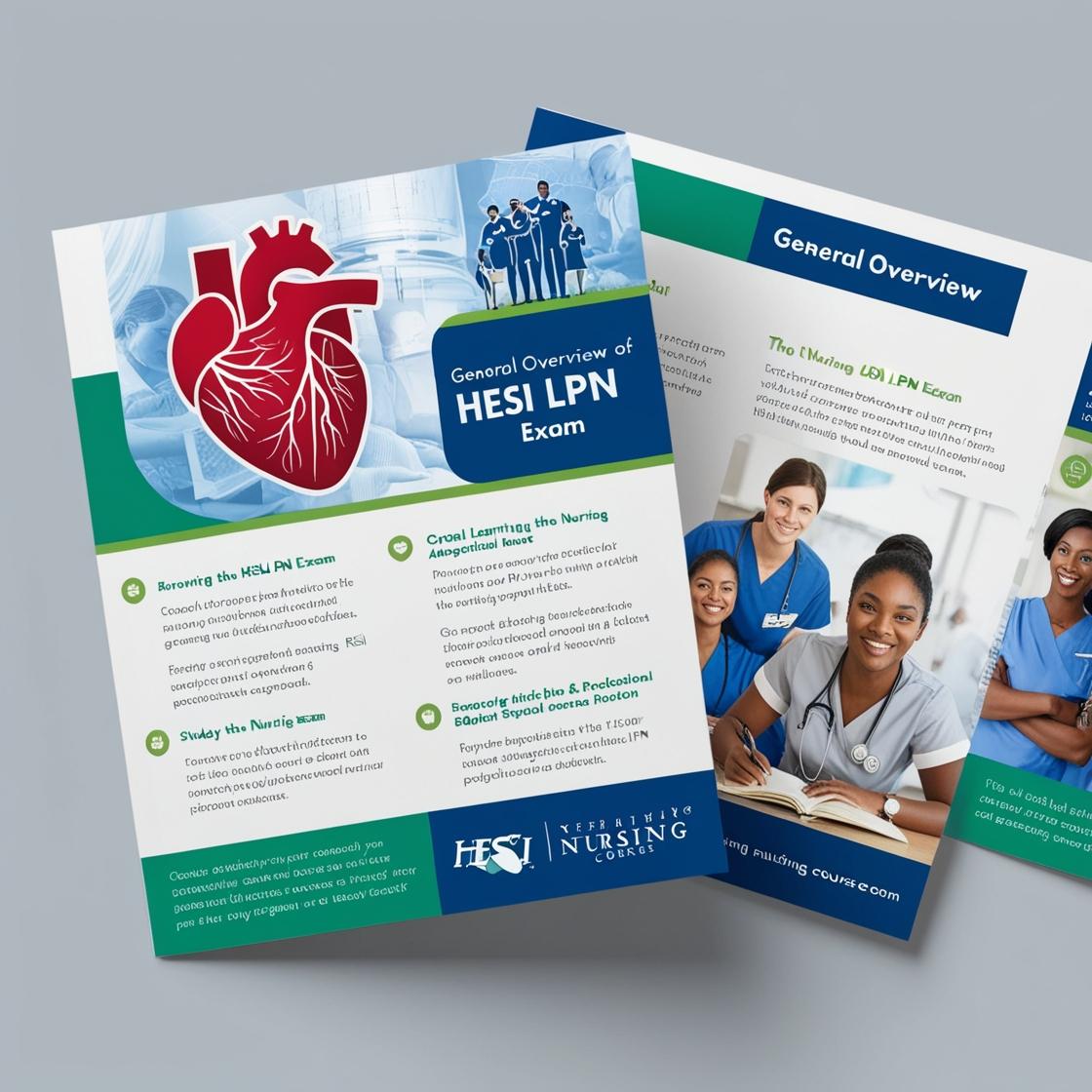HESI LPN
HESI PN Exit Exam
1. What is the primary action a healthcare professional should take when a patient with a suspected myocardial infarction (MI) arrives in the emergency department?
- A. Apply a cold compress to the chest
- B. Administer oxygen and obtain an electrocardiogram (ECG)
- C. Encourage the patient to walk to reduce anxiety
- D. Provide a high-carbohydrate meal
Correct answer: B
Rationale: Administering oxygen and obtaining an ECG are crucial initial steps when managing a suspected myocardial infarction (MI). Oxygen helps improve oxygenation to the heart muscle, while an ECG is essential to diagnose an MI promptly. Applying a cold compress, encouraging the patient to walk, or providing a high-carbohydrate meal are not appropriate actions in the initial management of a suspected MI. Applying a cold compress can delay necessary interventions, encouraging the patient to walk may worsen the condition, and providing a high-carbohydrate meal is irrelevant to the immediate needs of a patient with a suspected MI.
2. The PN is caring for a client with schizophrenia who continues to repeat the last words heard. Which nursing problem should the PN document in the medical record?
- A. Altered thought processes
- B. Impaired social interaction
- C. Risk for self-directed violence
- D. Disturbed thought processes
Correct answer: D
Rationale: The correct answer is D: Disturbed thought processes. Echolalia, the repetition of heard words, is associated with disturbed thought processes, which are commonly seen in schizophrenia. Altered thought processes (Choice A) is a generic term and does not specifically address the behavior of repeating words. Impaired social interaction (Choice B) is not the primary concern when a client repeats the last words heard. Risk for self-directed violence (Choice C) is not directly related to the behavior of repeating words but focuses on the potential harm the client may cause to themselves.
3. Which of the following is NOT a second-line agent used for the treatment of Tuberculosis?
- A. Amikacin
- B. Moxifloxacin
- C. Rifabutin
- D. Cycloserine
Correct answer: C
Rationale: The correct answer is C, Rifabutin. Rifabutin is actually a first-line drug used in the treatment of tuberculosis. Choices A, B, and D (Amikacin, Moxifloxacin, and Cycloserine) are considered second-line agents for tuberculosis treatment. These drugs are used when the first-line medications are either ineffective or cannot be tolerated by the patient.
4. After a laparoscopic cholecystectomy, what is the most important instruction the nurse should give the client regarding post-operative care at home?
- A. Avoid lifting heavy objects for at least a week.
- B. Follow a low-fat diet.
- C. Monitor the incision sites for signs of infection.
- D. Resume normal activities as tolerated.
Correct answer: C
Rationale: Monitoring the incision sites for signs of infection is crucial after a laparoscopic cholecystectomy. Infections can lead to serious complications if not detected early. While avoiding heavy lifting and following a low-fat diet are important aspects of recovery, monitoring for infection takes precedence as it directly impacts the client's immediate post-operative well-being. Therefore, option C is the correct answer as it addresses the most critical aspect of post-operative care.
5. The PN observes a UAP bathing a bedfast client with the bed in the high position. Which action should the PN take?
- A. Remain in the room to supervise the UAP
- B. Determine if the UAP would like assistance
- C. Assume care of the client immediately
- D. Instruct the UAP to lower the bed for safety
Correct answer: D
Rationale: The correct action for the PN to take in this situation is to instruct the UAP to lower the bed for safety. Keeping the bed in the lowest position during care activities is crucial for preventing falls and injuries to both the client and the caregiver. Instructing the UAP to lower the bed addresses the immediate safety concern. Choice A is incorrect because simply supervising the UAP without addressing the unsafe bed height does not ensure the client's safety. Choice B is incorrect as the priority is to address the safety concern rather than offering assistance to the UAP. Choice C is incorrect as assuming care of the client immediately does not address the root issue of the high bed position.
Similar Questions

Access More Features
HESI LPN Basic
$69.99/ 30 days
- 50,000 Questions with answers
- All HESI courses Coverage
- 30 days access @ $69.99
HESI LPN Premium
$149.99/ 90 days
- 50,000 Questions with answers
- All HESI courses Coverage
- 30 days access @ $149.99
